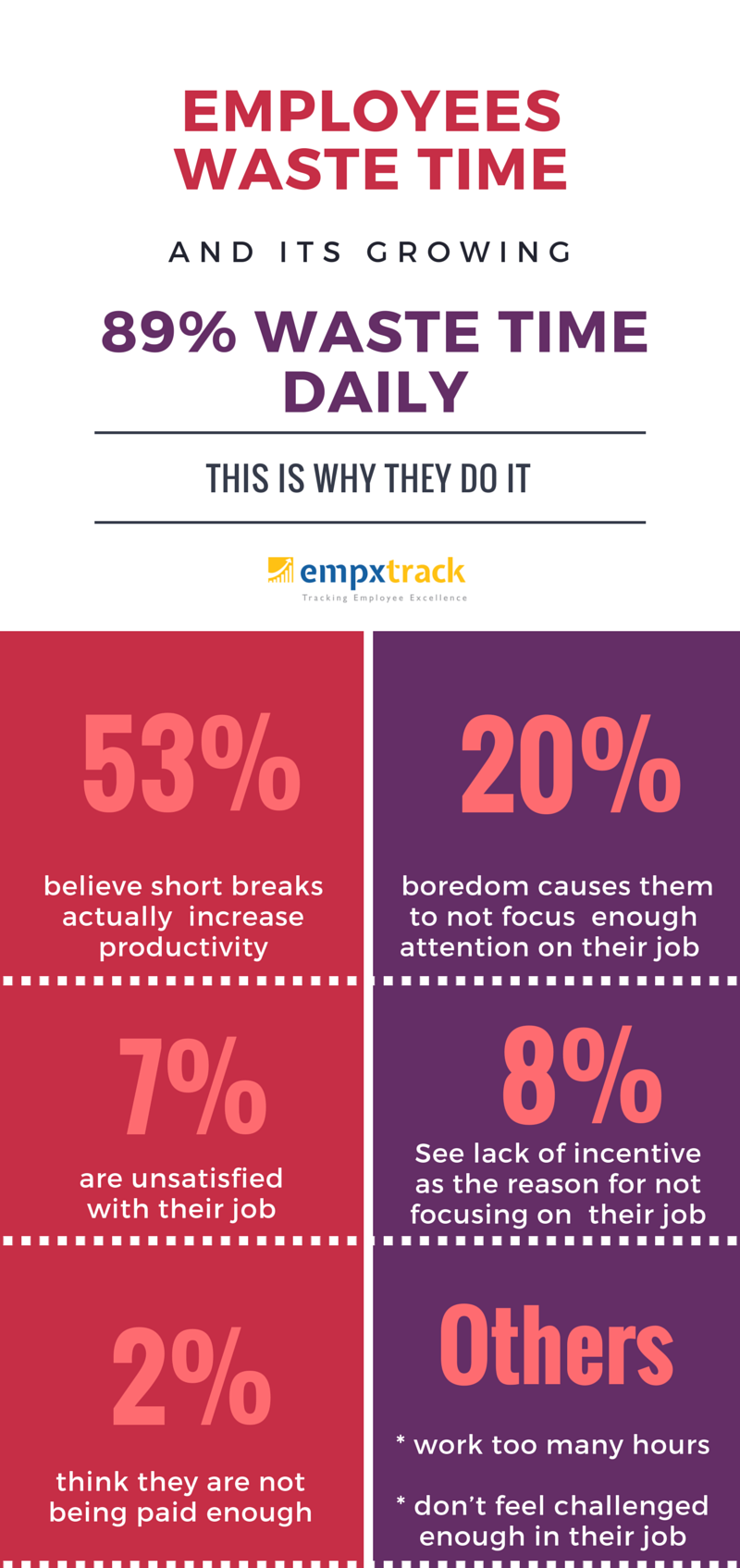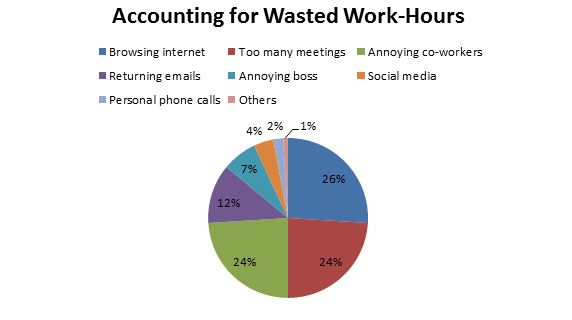Here are a couple of quick questions for you –
- Your employee may reach office daily, dot on time, and he may avail very few sick or emergency leaves; but is he being efficient?
- Is the time he spends in the office being optimally used – or is he bogged down by distractions?
The average employee spends 25% of his total work-hours on unproductive activities. So this percentage of employee hours not dedicated to work; translates into loss of money and lots of it.
Now even if they are not inherently lazy, several office processes ensure that they invest their time in activities that take away focus from the core task at hand.
Let’s look at some of the common time-management issues that employees face, which causes companies to lose money.
- The never-ending meetings: A Clarizen/Harris Interactive survey reveals that 40 per cent employees think status update meetings are a waste of time, and 70 per cent believe that it doesn’t help get any work done.
- Chilling at the water-cooler: Parkinson’s law states that “work expands so as to fill the time available for its completion.” Your employees might finish off their work and engage in water-cooler conversations, or office gossip, instead on taking on more work and make the best of their work-hours.
- Mind-numbing office politics: Misunderstandings and uncomfortable situations created by office politics, tends to result in waste of time that could have otherwise been spent on productive activities.
- Online shopping and personal errands during work hours: Personal phone calls, searching for new job opportunities, shopping online, or checking personal email – all add up to whiling away precious work hours.
- Social media addiction: With the advent of social media, 64 per cent of employees visit non-work websites every day at work.In terms of time wasted on the internet, Google led the pack with Facebook following at 23 per cent and Linkedin at 13 per cent.A report by Reuters(2007) claims that Internet misuse in the workplace costs American corporations more than $178 billion annually in lost productivity. This translates into a loss of more than $5,000 per employee per year.

- Not another internal e-mail: On an average, it takes an employee 64 seconds to get back to the work that he was engaged in, before the email interruption. But here’s a quick get around. Create weekly or bi-weekly newsletters depending on the news, and send it ONLY to the right segment of the audience.

But why do employees slack off at work?

Motivate your Employees for Optimum Utilization of Time
- Know your employees – Keep a finger on the pulse of your employees to understand what stops them from giving their all to the job at hand.
For instance – though it is commonly believed that the youngest workers often waste the most time, it’s actually the middle-aged population (ages 26 to 39) who are the biggest offenders.Run employee surveys or feedback from managers. - Motivate your employees: Basis your knowledge of employee needs, you can introduce motivational tactics that ensure that your people love the firm, are driven to work harder and make the best use of the work-hours. Here are comprehensive lists of motivational tools that you can refer to:
- Set rules – Establish and enforce policies that relate to use of internet at work or taking long breaks. Also implement time-sheets and attendance trackers to help managers keep track of how employees use their time, at work.
Start by asking your people how they spend their time, at work. Then use a tool such as Empxtrack, the integrated HR solutions provider, to manage their time better.




